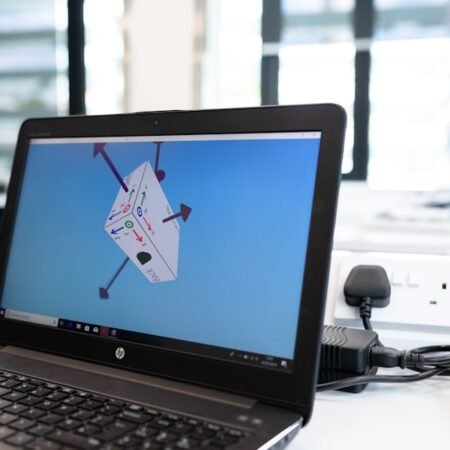Session hijacking is a malicious cyber attack where an attacker seizes control of a user’s active session on a computer system or network. This occurs when an attacker intercepts and steals the session ID or token used to authenticate a user’s session. Once in control, the attacker can impersonate the user, accessing sensitive information or performing unauthorized actions.
Session hijacking can occur on any network, including public Wi-Fi networks, and can be challenging to detect since the attacker may appear as a legitimate user. A common method of session hijacking involves packet sniffing, where an attacker intercepts and analyzes data packets transmitted over a network to obtain the session ID or token. Another method is through cross-site scripting (XSS) attacks, where an attacker injects malicious code into a website to steal session information from users.
It is essential for users to understand the methods and risks of session hijacking to protect themselves from this type of cyber attack. Session hijacking poses a significant threat to user security and privacy, as it can lead to unauthorized access to sensitive information and accounts. Users must be aware of the risks and take measures to protect themselves from session hijacking attacks.
Key Takeaways
- Session hijacking is a serious security threat that can compromise user accounts and sensitive information.
- Best practices for securing user sessions include using secure communication protocols and implementing multi-factor authentication.
- Monitoring and detecting session hijacking attempts is crucial for preventing unauthorized access to user accounts.
- Educating users about session hijacking risks and regularly updating and patching software and systems are essential for staying safe from session hijacking.
- Implementing secure communication protocols and utilizing multi-factor authentication are effective measures for protecting user sessions from hijacking.
Best practices for securing user sessions
Secure Communication Protocols
Using secure and encrypted communication protocols, such as HTTPS, is crucial when accessing websites and online services. This helps prevent attackers from intercepting and stealing session information as it is transmitted over the network.
Multifactor Authentication
Implementing multifactor authentication for your accounts adds an extra layer of security. By requiring multiple forms of verification, such as a password and a one-time code sent to your mobile device, you can prevent unauthorized access even if your session ID or token is stolen by an attacker.
Regular Monitoring and Detection
Regularly monitoring and detecting any attempts at session hijacking is vital. You can do this through the use of intrusion detection systems and security monitoring tools that alert you to any suspicious activity on your accounts. By staying vigilant and proactive in monitoring your sessions, you can quickly identify and respond to any potential threats.
Implementing secure communication protocols
Implementing secure communication protocols is essential for protecting user sessions from hijacking attacks. One of the most effective ways to do this is by using HTTPS, which encrypts data transmitted between a user’s device and a website or online service. This helps to prevent attackers from intercepting and stealing session information as it is transmitted over the network.
In addition to using HTTPS, users should also be cautious when using public Wi-Fi networks, as these are often targeted by attackers looking to intercept session information. It is important for users to avoid accessing sensitive accounts or entering personal information when using public Wi-Fi, and to use a virtual private network (VPN) for added security. Another important aspect of implementing secure communication protocols is to ensure that websites and online services are using the latest security standards and protocols.
This includes regularly updating and patching software and systems to address any vulnerabilities that could be exploited by attackers.
Utilizing multi-factor authentication
| Security Measure | Description |
|---|---|
| Use HTTPS | Ensure that the website uses HTTPS to encrypt the data transmitted between the user’s browser and the server, making it harder for attackers to hijack the session. |
| Implement Multi-factor Authentication | Require users to provide multiple forms of verification, such as a password and a code sent to their phone, to access their accounts. |
| Avoid Public Wi-Fi | Avoid logging into sensitive accounts when connected to public Wi-Fi networks, as they are more susceptible to session hijacking attacks. |
| Regularly Log Out | Always log out of accounts when finished using them, especially on shared or public computers, to prevent unauthorized access. |
| Use Strong Passwords | Encourage users to create strong, unique passwords for each account to reduce the risk of unauthorized access through session hijacking. |
Multi-factor authentication is an effective way for users to add an extra layer of security to their accounts and protect themselves from session hijacking attacks. By requiring users to provide multiple forms of verification, such as a password and a one-time code sent to their mobile device, multi-factor authentication helps to prevent unauthorized access even if the session ID or token is stolen by an attacker. In addition to using multi-factor authentication for their accounts, users should also consider using strong and unique passwords for each of their accounts.
This can help to prevent attackers from gaining access to multiple accounts if one set of credentials is compromised. Another important aspect of utilizing multi-factor authentication is to enable account recovery options, such as providing a backup email address or phone number. This can help users regain access to their accounts if they are locked out due to a session hijacking attack or other security incident.
Monitoring and detecting session hijacking attempts
Monitoring and detecting session hijacking attempts is crucial for users to protect themselves from this type of cyber attack. One way to do this is through the use of intrusion detection systems and security monitoring tools that can alert users to any suspicious activity on their accounts. In addition to using intrusion detection systems, users should also be proactive in monitoring their own accounts for any signs of unauthorized access or suspicious activity.
This includes regularly reviewing account activity logs and looking out for any unfamiliar devices or locations associated with their sessions. Another important aspect of monitoring and detecting session hijacking attempts is to report any suspicious activity to the appropriate authorities or service providers. By reporting potential threats, users can help to prevent further attacks and protect themselves and others from falling victim to session hijacking.
Educating users about session hijacking risks
Understanding Session Hijacking Risks
One effective way to educate users about session hijacking risks is through training programs and awareness campaigns. These initiatives provide information about the latest threats and best practices for securing user sessions, enabling users to stay informed about potential risks and take proactive steps to protect themselves from session hijacking attacks.
Staying Informed about Security Threats
In addition to formal training programs, users should also be encouraged to stay informed about the latest security threats and best practices through online resources, such as blogs, articles, and social media channels. By staying informed, users can stay ahead of potential threats and take proactive steps to protect themselves from session hijacking.
Proactive Protection against Session Hijacking
By educating users about session hijacking risks and promoting best practices for securing user sessions, individuals can take proactive steps to protect themselves from this type of cyber attack. This includes being aware of the latest threats, using strong passwords, and avoiding suspicious links or attachments.
Regularly updating and patching software and systems
Regularly updating and patching software and systems is crucial for protecting user sessions from session hijacking attacks. This includes ensuring that all devices, applications, and online services are using the latest security standards and protocols in order to address any vulnerabilities that could be exploited by attackers. One way to ensure that software and systems are regularly updated and patched is by enabling automatic updates whenever possible.
This can help to ensure that devices and applications are always using the latest security features and protections without requiring manual intervention from users. In addition to enabling automatic updates, users should also be proactive in checking for and applying any available patches or updates for their devices, applications, and online services. This includes regularly reviewing release notes and security advisories from vendors in order to stay informed about any potential vulnerabilities that need to be addressed.
In conclusion, understanding the risks of session hijacking and implementing best practices for securing user sessions are essential for protecting against this type of cyber attack. By utilizing secure communication protocols, implementing multi-factor authentication, monitoring and detecting session hijacking attempts, educating users about the risks, and regularly updating and patching software and systems, users can stay safe from session hijacking attacks and protect their sensitive information and accounts from unauthorized access. Staying informed about the latest threats and best practices is crucial for staying ahead of potential risks and taking proactive steps to protect against session hijacking attacks.
FAQs
What is session hijacking?
Session hijacking is a type of cyber attack where a hacker takes over a user’s session on a website or application. This allows the hacker to impersonate the user and potentially access sensitive information.
How can users prevent session hijacking?
Users can prevent session hijacking by using secure and unique passwords for their accounts, enabling two-factor authentication, and being cautious when using public Wi-Fi networks.
What are some best practices for staying safe from session hijacking?
Some best practices for staying safe from session hijacking include logging out of accounts when not in use, using HTTPS connections when accessing sensitive information, and regularly monitoring account activity for any suspicious behavior.
What should users do if they suspect their session has been hijacked?
If users suspect their session has been hijacked, they should immediately change their passwords, log out of all devices, and report the incident to the website or application’s support team.









